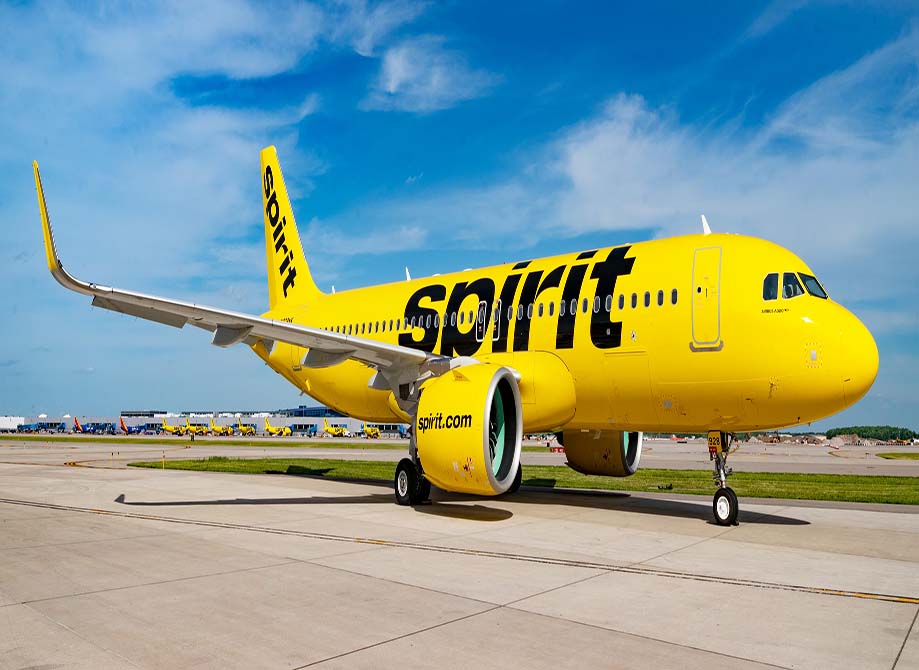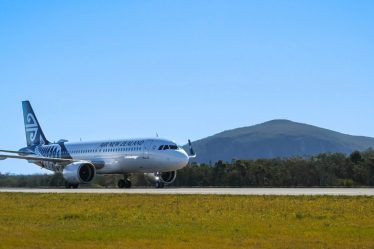
Traveling to Detroit can be an exciting adventure, whether you’re visiting for its rich automotive history, vibrant music scene, or revitalized downtown area. However, finding affordable flights can often be a challenge. This guide aims to help you navigate the complexities of booking flights to Detroit, offering detailed tips and strategies to ensure you get the best deals possible.
Great Value Vacation
Unlock a world of effortless travel with Great Value Vacation! We stand out by offering all-in-one packages that bundle flights, cozy stays, and extra perks for a seamless journey. No more puzzling over travel details – we've got it all covered. Great Value Vacation – Your stress-free ticket to unforgettable adventures!
1. Understanding Detroit’s Airports
Detroit, a major city in the United States, is served by two primary airports catering to different types of travelers and aviation needs:
Detroit Metropolitan Wayne County Airport (DTW)
- Location: Situated in Romulus, approximately 20 miles southwest of downtown Detroit.
- Overview: DTW is one of the largest and busiest airports in the country, renowned for its extensive domestic and international flight connections. It serves as a major hub for airlines like Delta, American Airlines, United Airlines, and Southwest Airlines.
- Facilities: The airport offers a wide range of amenities including multiple dining options, shopping outlets, lounges, and efficient transportation services such as car rentals, taxis, and shuttles.
- Traveler Tips: Plan to arrive at least 2 hours prior to your domestic flight departure and 3 hours for international flights to navigate security checks and potential congestion during peak travel times.
Willow Run Airport (YIP)
- Location: Located in Ypsilanti, approximately 30 miles west of downtown Detroit.
- Overview: Willow Run Airport primarily serves cargo operations and general aviation, though it occasionally handles charter flights and smaller passenger services.
- Facilities: While it lacks the extensive passenger amenities of DTW, YIP provides essential services for private and corporate aviation needs, including FBO (Fixed-Base Operator) services.
- Usage: It’s commonly utilized by private jets, aviation enthusiasts, and occasional charter flights. Travelers using YIP should arrange ground transportation in advance due to limited public transit options.
2. Best Times to Fly to Detroit
When planning your trip to Detroit, understanding the best times to book flights can save you money and enhance your travel experience:
Off-Peak Seasons
- Winter (January to March): With the exception of holiday periods, flights during winter months often offer more affordable fares. However, be mindful of potential weather-related delays, especially due to snowstorms common in the region.
- Late Fall (October to November): After the peak fall foliage season and before the holiday rush, flights tend to be more economical. It’s an ideal time to explore Detroit without the summer crowds.
Peak Seasons
- Summer (June to August): Detroit experiences a surge in tourism during summer, thanks to pleasant weather and numerous festivals and events. Flights during this period are typically more expensive, so booking early is advisable.
- Holiday Season (Late December): Prices spike around Christmas and New Year’s due to increased demand for travel during the holiday period. Booking well in advance or considering alternative travel dates can help mitigate costs.
3. Flexible Travel Dates

One of the most effective ways to find cheap flights is to remain flexible with your travel dates. Here’s how to do it:
Using Flexible Date Searches
- Google Flights: Allows you to compare prices across a range of dates.
- Skyscanner: Offers a “whole month” view to identify the cheapest days to fly.
- Kayak: Provides a flexible date search option to see the best prices within +/- 3 days of your chosen dates.
Avoiding Weekends
- Midweek Flights: Flying on Tuesdays, Wednesdays, and Thursdays is often cheaper than weekends.
- Early Morning and Late Night Flights: These less popular times can offer lower fares.
4. Setting Up Fare Alerts
Fare alerts notify you when prices drop for flights to your desired destination. Here’s how to set them up:
Popular Fare Alert Tools
- Hopper: Predicts future flight prices and notifies you when to book.
- Google Flights: Allows you to track prices for specific routes.
- Airfarewatchdog: Monitors fares and sends email alerts for significant price drops.
5. Booking Strategies
Employing the right booking strategies can make a significant difference in the cost of your flight.
Book in Advance
- Optimal Booking Window: Generally, booking 1-3 months in advance for domestic flights and 2-8 months for international flights yields the best prices.
Last-Minute Deals
- Risk and Reward: Last-minute deals can be found, but they are risky as prices may remain high if flights fill up.
- Resources: Apps like HotelTonight for bundled flight and hotel deals, or airlines’ last-minute deal sections.
6. Utilizing Reward Programs and Points
Maximize your savings by leveraging airline rewards programs and credit card points.
Airline Loyalty Programs
- Delta SkyMiles, American AAdvantage, United MileagePlus: Enroll in these programs to earn miles on every flight which can be redeemed for future travel.
Credit Card Points
- Travel Rewards Credit Cards: Cards like Chase Sapphire Preferred, American Express Platinum, and Capital One Venture offer points for purchases that can be used to offset travel costs.
- Sign-Up Bonuses: Many cards offer significant bonuses when you meet minimum spending requirements in the first few months.
7. Comparing Airlines and Travel Sites
Using multiple platforms to compare prices ensures you’re getting the best deal.
Flight Comparison Websites
- Momondo: Offers extensive filtering options and often finds lesser-known deals.
- Google Flights: Provides a comprehensive comparison of flight options and prices.
- Skyscanner: Great for finding the cheapest flight options across a broad range of dates.
Direct Airline Websites
- Booking Directly: Sometimes, airlines offer exclusive deals on their own websites that aren’t available on third-party sites.
8. Budget Airlines and Alternative Airports
Exploring budget airlines and nearby airports can lead to significant savings.
Budget Airlines
- Spirit Airlines, Frontier Airlines: These no-frills airlines often have lower base fares. Be mindful of additional fees for baggage and other services.
Alternative Airports
- Nearby Airports: Check flights to and from nearby airports like Toledo Express Airport (TOL) or Flint Bishop International Airport (FNT). Sometimes flying into a nearby airport and driving to Detroit can be cheaper.

9. Seasonal Promotions and Discounts
Keep an eye out for seasonal promotions and special discounts.
Sales and Special Offers
- Airline Sales: Major airlines frequently have sales during specific times of the year, such as Black Friday, Cyber Monday, and back-to-school promotions.
- Holiday Sales: Watch for deals around major holidays when airlines often offer discounted fares.
10. Group Travel and Package Deals
Traveling with others or bundling services can reduce costs.
Group Discounts
- Airline Group Rates: Some airlines offer discounts for group travel, typically starting at 10 or more passengers.
Travel Packages
- Bundled Deals: Websites like Expedia, Travelocity, and Orbitz offer discounts when you book flights, hotels, and car rentals together.
11. Exploring Stopover Options
Sometimes, booking flights with stopovers can save money and add an extra destination to your trip.
Multi-City Bookings
- Long Layovers: Look for flights with long layovers in interesting cities. Some airlines even offer free stopover programs allowing you to explore a secondary destination without extra cost.
12. Booking on the Right Day
Studies have shown that the day you book can affect prices.
Best Days to Book
- Tuesday and Wednesday: Often cited as the best days to book flights due to lower fares released early in the week.
13. Using Regional Airlines
Sometimes, regional carriers offer better deals than major airlines.
Regional Airlines
- Air Wisconsin, Republic Airways: These smaller airlines sometimes offer competitive prices and fly into DTW.
14. Red-Eye Flights
Taking red-eye flights (overnight flights) can often be cheaper.
Pros and Cons
- Cost Savings: These flights are usually less in demand, resulting in lower prices.
- Travel Comfort: Consider if the savings outweigh the potential discomfort of flying overnight.
15. Negotiating with Travel Agents
Sometimes, an experienced travel agent can find deals that are not available online.
Benefits of Travel Agents
- Expert Knowledge: They have access to exclusive deals and can offer personalized advice.
- Convenience: They handle all booking arrangements, saving you time.
Finding great deals on flights to Detroit requires a combination of flexibility, strategic planning, and utilizing various tools and resources. By understanding the best times to fly, setting up fare alerts, using reward programs, and exploring different booking strategies, you can significantly reduce your travel costs. Remember to compare prices across multiple platforms, consider alternative airports, and be open to different travel dates and times. With these tips, you’ll be well on your way to finding the best deals and enjoying a memorable trip to the Motor City. Happy travels!



